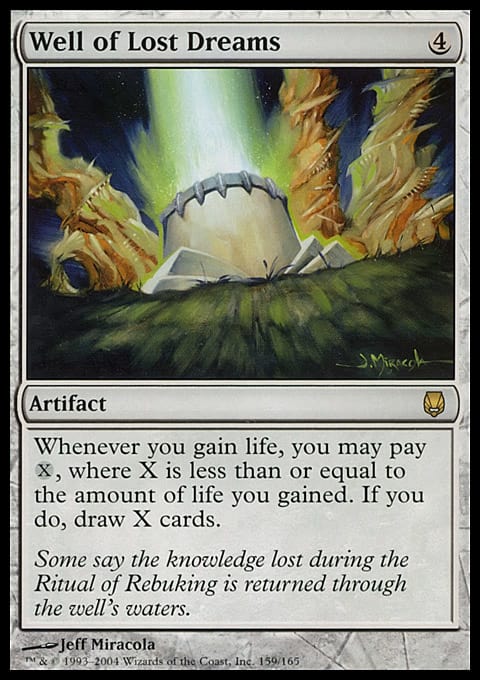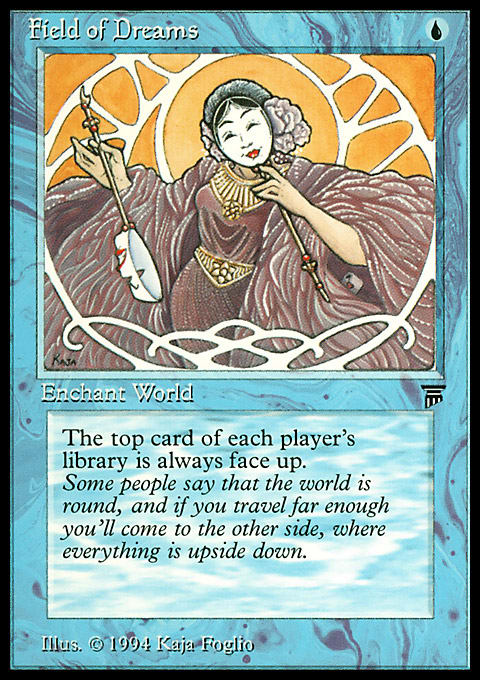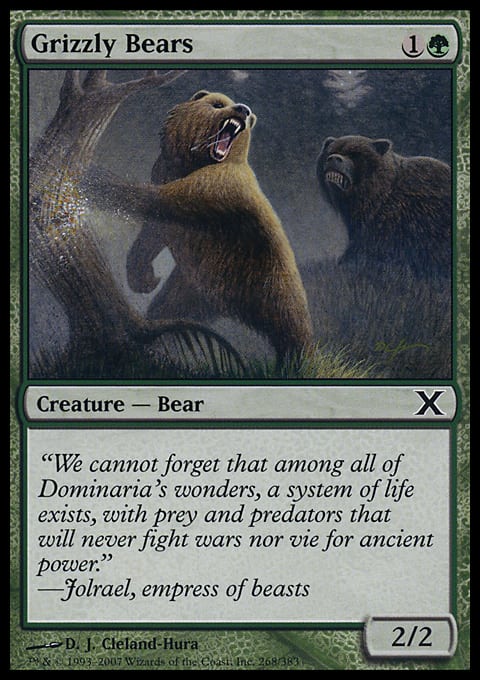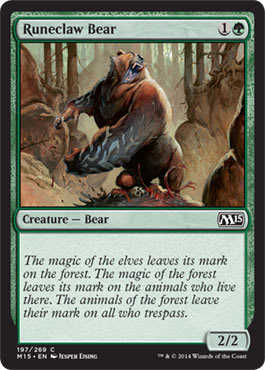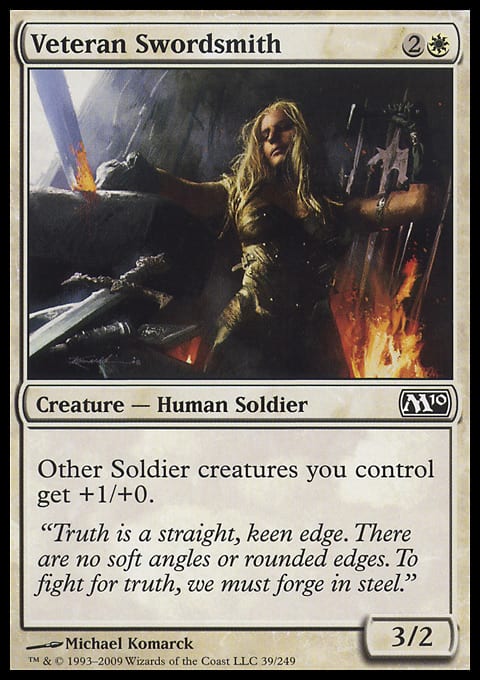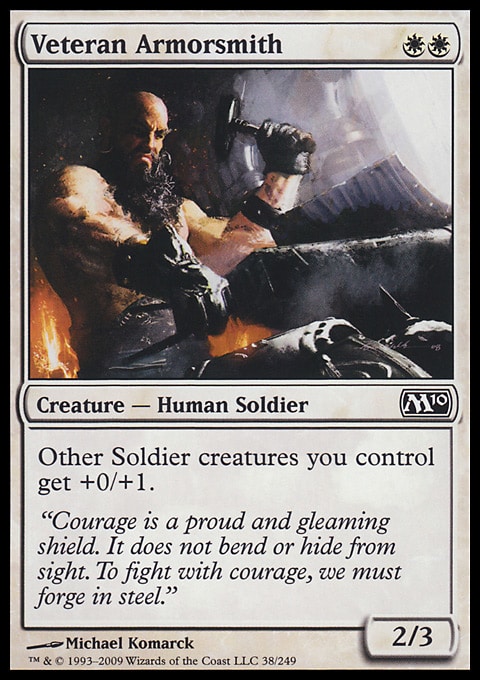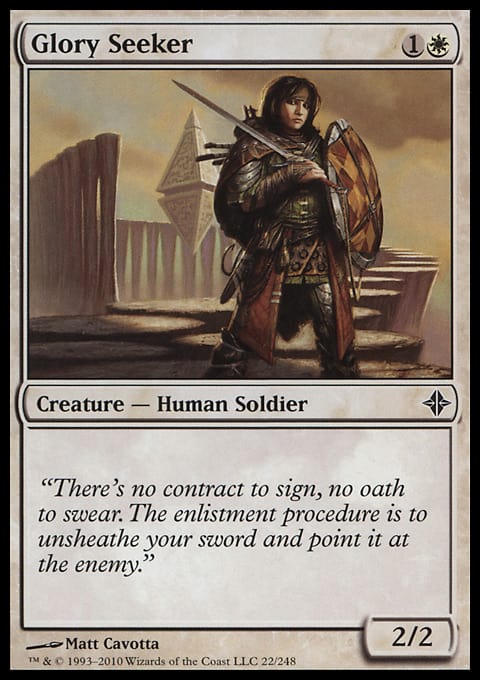During the lunch hour on Fridays, I meet with a group of coworkers to play tabletop games. So far, we’ve played a lot of Munchkin and Citadels, with Love Letter and San Juan thrown in, too. Not many of them have played Magic, but they’re open to learning the game.
This is every Magic player’s dream, isn’t it?—a group of willing gamers and an established weekly game time. Who doesn’t want to break up his or her work day with a quick trip to the Multiverse?
With your help, I’d like to design a Magic Cube for the express purpose of teaching my coworkers to play Magic—a Cube that resonates with their understanding of the fantasy genre, a Cube filled with intuitive, easy-to-play cards. I’ll explain more about why I think they need their own Cube below. Want to help me design something new?
Design with the Audience in Mind
If I truly want my coworkers to fall in love with Magic, it’s probably best to create something specifically for them. One of the great things about this game is its scalability. It can be tailored to meet gamers where they’re at.
Here’s whom we’re designing for, in general terms:
The Casual Gamer – This person got into tabletop games with Settlers of Catan. He’s played Ticket to Ride and Bang!, but that’s about it. He doesn’t play games enough to use the phrase "tabletop game" in the same way you and I would. When he says it, it includes Scrabble and Trivial Pursuit. His familiarity with the fantasy genre stems entirely from the Lord of the Rings films, the Harry Potter films, and Walt Disney’s The Sword in the Stone.
The Dungeon Master – This guy lived and died with D&D in high school and college. He likes to write and run his own adventures. He has a dedicated room/bookshelf/wardrobe for D&D game nights. He tried to convince his wife to do a medieval-themed wedding, but she wouldn’t have it. He says he’s never played Magic because he “likes games that use your imagination more.” His familiarity with the fantasy genre would make Merlin jealous. Do not touch this man’s customized D20 without asking first. He might pull a crossbow on you.
The Gamer-Turned-Busy-Parent – There are at least two people like this in the lunch group. These folks used to play a lot of different games, but for the last few years, they have been distracted by child-raising. These young moms or dads might even have old starter decks from the Urza's block in their basements somewhere . . . or was that a starter deck for World of Warcraft? (They’re not sure.) Their affinity with the fantasy genre and gaming culture is pretty high, though out of date.
The Video Gamer – This guy is an intern with the company. He spends more time playing MMOs in his dorm than he does working on the projects you assign him. His connection with the fantasy genre is based on the Lord of the Rings movies, Game of Thrones, and his old Zelda game. The day after you teach him to play Magic at work, he will most likely go home and download Duels of the Planeswalkers.
The Magic Enthusiast – This is you and me, of course.
The Goals
I mentioned in a previous Cube article that Cubes are best designed when clear goals are established from the outset. Just like Wizards of the Coast’s R&D department, Cube designers are creating Limited environments that should be fun to play, have a lot of natural flavor and story resonance, and include cards that synergize with each other. With our audience in mind, here are the goals I’ve come up with:
This Cube must have high resonance with popular fantasy tropes.
As mentioned above, most of these folks understand fantasy through popular films and TV: Lord of the Rings, Game of Thrones, Harry Potter, and so on. This Cube will be more fun for them if it resonates with their understandings of what fantasy is. Non-Magic-looking cards like Horobi, Death's Wail should be avoided in favor of classic-fantasy-genre cards. Also, cards with strong fantasy images should be favored over ones without. For example, the Disenchant from Seventh Edition is probably better than the Disenchant from Fourth Edition because the image will have more immediate resonance for the players.
 |  |  |
This Cube should play quickly.
We don’t have a lot of time to play during a lunch break—one hour tops. My plans are to teach my coworkers Magic with a variation of the Fat Stack variant format. In this format, everyone shares two libraries (one of spells, one of land cards). At the top of the game, each player can start with three different basic lands of his or her choice on the battlefield. Whenever a player draws a card, he or she is able to choose from which stack to draw. Players have their own graveyards. A more detailed explanation (with some variation) can be read at the link above.
This Cube should only feature cards that are easy to play with intuitive mechanics.
Again, keeping our audience and our time frame in mind, this is a necessary goal. This means we’ll want to pick cards with clear, modern language on them. Dated cards with terms like “interrupt,” “retroactively,” and “local enchantments” are probably best left out, as they would just complicate things for new players unnecessarily. We should also avoid niche or complicated mechanics such as banding, horsemanship, madness, and anything snow-related.
This Cube should feature cards with intuitive names and images.
This is the difference between Grizzly Bears, Runeclaw Bear, and Balduvian Bears. Everyone knows what Grizzly Bears are. Some people know what a rune is, but not everyone. So “Runeclaw” might take some folks a few seconds to get. Only Vorthos Magic players know what and where Balduvia is. In this Cube, Grizzly Bears should be chosen.
This Cube should be small.
I’d like to comfortably carry this Cube in a four-hundred-count storage box to Arby’s when our group heads there for lunch—or to the office break room when we go there. This includes lands.
This Cube should be inexpensive.
If this works, I plan to leave these cards at work. I also have no plans to sleeve this Cube. It’s probably best if we don’t care about the condition of these cards. If the Dungeon Master spills ketchup on a Grizzly Bears, or if the Gamer-Turned-Parent spills her coffee on the Greatsword, no worries.
Lessons from Teaching Others to Play Games
I’m sure most of us have taught someone else to play Magic before. If you haven’t, I bet you’ve at least taught someone how to play something. There are some common things I’ve seen while teaching people to play games. Since I know these things are common, I want to make sure this Cube takes them into account. Here’s what I’ve seen from Magic and other games.
- Gaining life is a big deal for new Magic players. New players typically avoid cards like Sewer Rats and Mischievous Poltergeist, but they often include cards like Angel's Feather.
- New Magic players naturally build tribal decks. It would be good if this Cube favored easy-to-play tribal cards like Veteran Swordsmith and Veteran Armorsmith.
- New players love to draw cards. Nearly every person I’ve ever taught to play Magic has commented on how he or she runs out of cards too fast when he or she plays this game.
- Everyone has played a card game in which you draw, play, and discard. There are so many games that have this basic structure. That’s part of the reason why I plan to use the Fat Stack variant to teach the game. Not only does it help players avoid mana screw, but players are more likely to be able to draw and play a card every turn.
- Rolling dice and flipping coins is fun. Goblin Bangchuckers, here we come!
- Repetition reinforces understanding. Players understand cards faster when they see the same card played more than once. For example, when I was first learning to play Magic, I was quick to include Serra Angel in all my white decks because a friend had played it against me a few times. I knew how powerful it was, even though I’d never played it and didn’t really understand the game well. With that in mind, I plan to include duplicates in this Cube. I’m thinking that my coworkers will probably understand how cards work faster when they see them played multiple times by multiple players.
The Lists So Far
I’ve started to compile the lists. What am I forgetting? With the thousands of Magic cards in existence, I’m sure I’ve forgotten something. Are my cards flavorful enough? Do I have enough synergies built in?
"White"
- Creatures (18)
- 1 Abbey Griffin
- 1 Assault Griffin
- 1 Charging Griffin
- 1 Cloudchaser Eagle
- 1 Foot Soldiers
- 1 Skyshroud Falcon
- 2 Auramancer
- 2 Venerable Monk
- 2 Veteran Armorsmith
- 2 Veteran Swordsmith
- 4 Glory Seeker
- Spells (16)
- 1 Avenging Arrow
- 1 Narrow Escape
- 1 Seize the Initiative
- 3 Disenchant
- 1 Angelic Blessing
- 1 Angelic Edict
- 2 Sacred Nectar
- 1 Guard Duty
- 2 Holy Strength
- 3 Pacifism
I’ve tried to include a Soldier theme in white. Also, I doubled up on cards like Sacred Nectar and Venerable Monk because I think new players will immediately grab them and play them. I put in two Auramancers and two Holy Strengths to balance with the two Gravediggers and two Unholy Strengths in black.
"Blue"
- Creatures (18)
- 1 Air Elemental
- 1 Azure Drake
- 1 Fortress Crab
- 1 Giant Octopus
- 1 Merfolk Sovereign
- 1 Prodigal Sorcerer
- 2 Augury Owl
- 2 Chasm Drake
- 2 Coral Merfolk
- 2 Merfolk Looter
- 2 Merfolk Observer
- 2 Merfolk Traders
- Spells (17)
- 3 Inspiration
- 3 Unsummon
- 4 Cancel
- 1 Fatigue
- 1 Misstep
- 1 Claustrophobia
- 1 Launch
- 1 Telepathy
- 2 Mind Control
With blue, I’ve tried to create a strong deep-sea theme with a lot of Merfolk, the Fortress Crab, and the Giant Octopus. I’ve include multiples of Inspiration and Mind Control because they’re easy to understand and fun to play. Since summon is a keyword in Magic, it made sense to include multiple Unsummons. Not only does Unsummon give blue some removal (along with Cancel), but it will reinforce what summoning means for new players. As I look at this preliminary list, I wonder if I don’t have enough Wizardy-type references. Where are Gandalf, Dumbledore, and Merlin? I feel that if the old wizard trope is going to show up in this Cube, it’s going to be in blue. Whom am I missing?
"Black"
- Creatures (18)
- 1 Royal Assassin
- 1 Tavern Swindler
- 1 Undead Minotaur
- 1 Vampire Aristocrat
- 1 Vampire Interloper
- 1 Walking Corpse
- 1 Zombie Goliath
- 2 Giant Cockroach
- 2 Gravedigger
- 2 Ravenous Rats
- 2 Vampire Bats
- 3 Black Cat
- Spells (17)
- 1 Altar's Reap
- 1 Bone Harvest
- 1 Lash of the Whip
- 4 Dark Banishing
- 2 Assassinate
- 2 Mind Rot
- 2 Raise Dead
- 1 Pestilence
- 1 Sinister Possession
- 2 Unholy Strength
The black doesn’t have a tribal theme. I’m not sure how to make black synergize more. I think I’ve chosen flavorfully-strong cards with intuitive abilities and actions, but I don’t know if a strong theme has emerged yet. Any thoughts? I’m certainly open to suggestions.
"Red"
- Creatures (15)
- 1 Goblin Arsonist
- 1 Goblin Chariot
- 1 Goblin Shortcutter
- 1 Ill-Tempered Cyclops
- 1 Ogre Sentry
- 1 Reckless Brute
- 2 Dragon Whelp
- 2 Goblin Bangchuckers
- 2 Raging Goblin
- 2 Shivan Dragon
- 1 Goblin Bowling Team
- Spells (20)
- 1 Fissure
- 1 Fling
- 1 Ricochet
- 1 Shock
- 2 Shatter
- 4 Lightning Bolt
- 1 Yawning Fissure
- 2 Act of Treason
- 2 Lava Axe
- 1 Goblin War Paint
- 1 Reflexes
- 1 Tin Street Market
- 2 Firebreathing
Red has some of the best creature types. Nearly every player I’ve taught to play Magic built a Goblin deck shortly after he or she learned the game. Add to that Dragons, Ogres, Cyclops, and Giants, and red becomes a new player’s favorite color pretty quickly. I included a handful of dice and coin cards in red just to keep the games interesting. The cards that have multiple copies are extremely fun (Goblin Bangchuckers); intuitive spells (Shatter, Lightning Bolt, Lava Axe, Firebreathing); or high-resonance creatures (the Dragons). I actually wish Shivan Dragon wasn’t called “Shivan” Dragon. For this audience, it would be better if it were just Furious Dragon or something similar.
"Green"
- Creatures (18)
- 1 Centaur Courser
- 1 Woodland Sleuth
- 2 Borderland Ranger
- 2 Giant Spider
- 2 Horned Troll
- 2 Norwood Ranger
- 2 Scaled Wurm
- 2 Treetop Rangers
- 4 Grizzly Bears
- Spells (17)
- 1 Plummet
- 2 Giant Growth
- 2 Mending Touch
- 3 Naturalize
- 1 Beast Hunt
- 1 Cultivate
- 1 Desert Twister
- 1 Make a Wish
- 2 Rampant Growth
- 1 Fertile Ground
- 2 Forced Adaptation
Like black, green is another color I’ve struggled with in this design process. It currently lacks a tribal theme, and it lacks strong removal (even Desert Twister feels off—in a flavor sense). I included Forced Adaptation to introduce +1/+1 counters to the new players. Most of the creatures should have high flavor resonance (the Rangers are a direct reference to Aragorn). What can I do to make green stronger?
"Artifacts"
- Creatures (8)
- 1 Beast of Burden
- 1 Composite Golem
- 2 Rusted Sentinel
- 2 Steel Wall
- 2 Stone Golem
- Spells (11)
- 1 Angel's Feather
- 1 Demon's Horn
- 1 Dragon's Claw
- 1 Kraken's Eye
- 1 Wurm's Tooth
- 2 Accorder's Shield
- 2 Greatsword
- 2 Warlord's Axe
The Lucky Charms cycle is include here because new players love them and because they’re dirt-cheap. In a casual multiplayer setting, they’ll probably be pretty powerful. The Equipment was chosen because of the flavor (who doesn’t think of Gimli when they see Warlord's Axe?). The Golems were picked because I think it’s an intuitive tribe for artifact creatures in the fantasy genre. They are the magical equivalent of robots and droids in science fiction.
So, what have I missed? How can I make this Cube better? I want to design something that will help my coworkers learn to play Magic quickly. We are starting to change games every couple of weeks. If we try a game and the reception is lukewarm (as was the case with Love Letter), we move on to a new game pretty quickly. I don’t anticipate that will be any different with Magic. I need to create a Cube, then, that is fun, flavorful, and easy to play in the first attempt.














